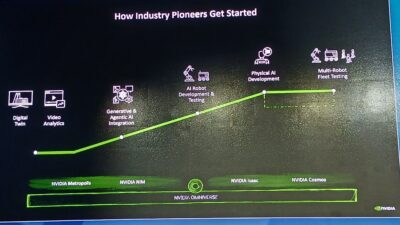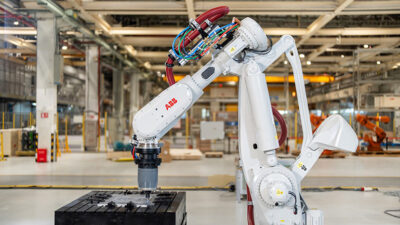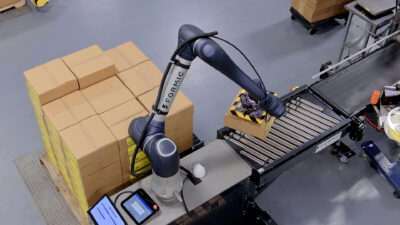Autonomous mobile robots (AMRs) and the software that makes the machines operate can help them thrive in many manufacturing applications. Four applications for under-rider AMRs are highlighted.
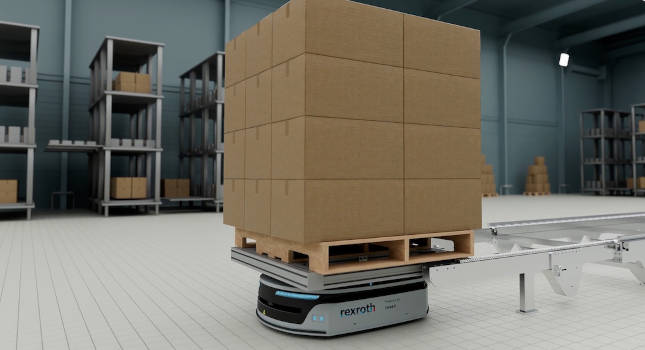
Learning Objectives
- Understand how autonomous mobile robots (AMRs) can help manufacturers.
- Learn what an under-rider AMR does and the tasks it can perform.
- Learn about the four applications where under-rider AMRs can be especially beneficial.
AMR insights
- Autonomous mobile robots (AMRs) can play a key role in manufacturing because of their name: They’re autonomous and do not require constant human intervention the way an automated guided vehicle (AGV) would.
- An under-rider AMR, which is designed to pick payloads from the bottom, can be valuable in palletizing, intralogistics, packaging and assembly lines, which often have a lot of moving parts and cannot afford downtime.
The autonomous mobile robot (AMR) is becoming a critical part of modern facilities, offering its users greater productivity, safety and efficiency with its ability to automate routine tasks. AMRs also offer facilities consistent labor since they show up and do their task daily without process interruptions. While many AMRs can fit any given application, an under-rider AMR can be valuable. They are designed to seamlessly maneuver underneath the payload to pick it up and transfer from point A to B.
Localization software guides AMRs
Before diving into where an under-rider AMR can be used, take a step back and look at how they work. Unlike alternatives like automated guided vehicles (AGVs), which require predefined routes, markers or guides, an AMR can navigate through an environment without human intervention.
Since it is critical for an AMR to understand its own location within this environment, we consider the localization software to be the “heart” of an AMR solution and one of the most important considerations when evaluating an AMR. Among multiple types available on AMRs to consider – the most common being simultaneous localization and mapping (SLAM), using lasers or vision.
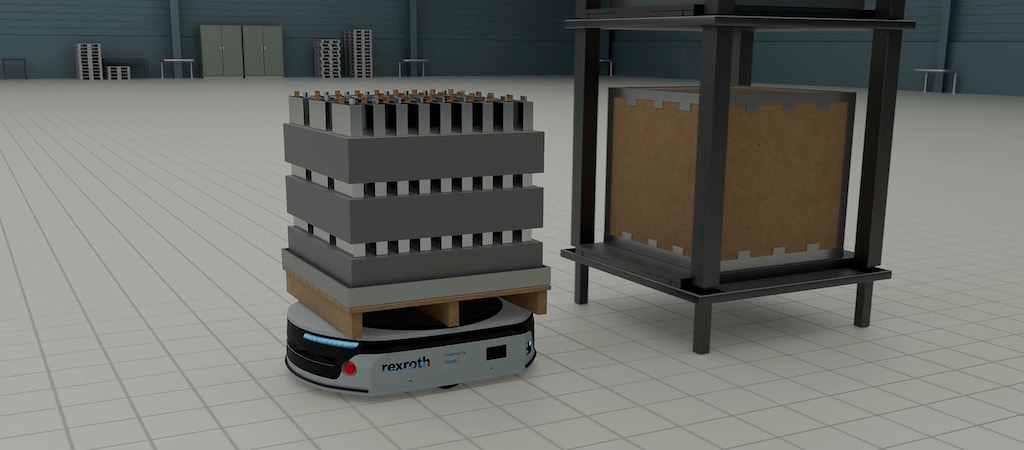
While localization types have their strengths and weaknesses, laser-based, SLAM-based technology is more flexible because it uses algorithms that allow the AMRs to localize in a variety of changing environments without external infrastructure. However, all laser-based SLAM technology isn’t made equal, so research is critical. Some key features of a reliable software that determines the position and orientation of a wide range of vehicle types in a fast-paced environment include:
-
Automatic map updates as the environment changes
-
Ability for fast and easy map extension
-
Dual laser and wheel odometry fusion capabilities
-
Reference alignment, reflector and QR code support for challenging environments
-
Easy to use graphical user interface with guided live mapping.
The localization software is a key technology component of an AMR that plays a vital role and resolves the challenge of localizing AMRs with maximum flexibility and usability.
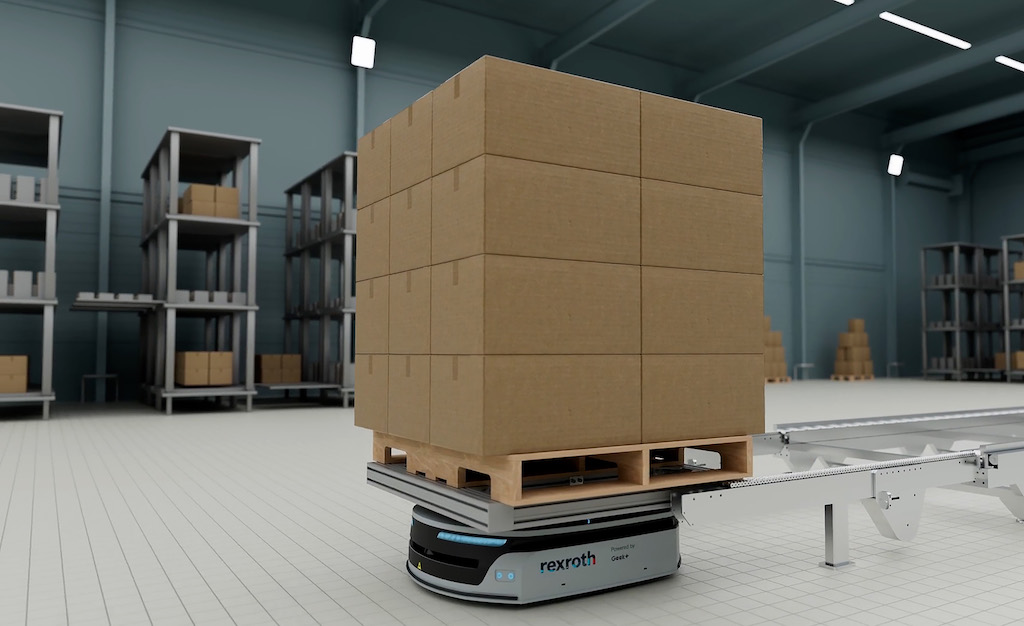
Four key applications for under-rider AMRs
Under-rider AMRs are not an uncommon sight in facilities and can help companies in many ways. In particular, companies should consider these four applications where this style of AMR makes the most sense in many industries.
1. Palletizing
Autonomous mobile robots can help consumer packaged goods (CPG) operations improve their palletizing systems by moving finished pallets to shrink-wrapping stations or storage areas, which has often required an operator with forklift.
One consideration is looking for an AMR that features sophisticated software that lets the robot independently determine its position and the best path to move the pallet to the next station. No tracks need to be laid, and no expert robotics programmers need to be engaged, simplifying a critical intralogistics function and freeing personnel to handle more demanding tasks.
2. Intralogistics within manufacturing
AMRs are a valuable tool to improve critical intralogistics functions — moving raw materials, finished goods, and work in process between warehouses/storage areas, production lines and shipping/receiving. These AMRs feature simplified programming, compact designs for tight turning spaces and versatile load capacities.
They provide an efficient and safe option for moving material from plant storage racks to the production line; this can be helpful in areas with labor shortages and can help reduce maintenance costs associated with fork trucks and pallet jacks.
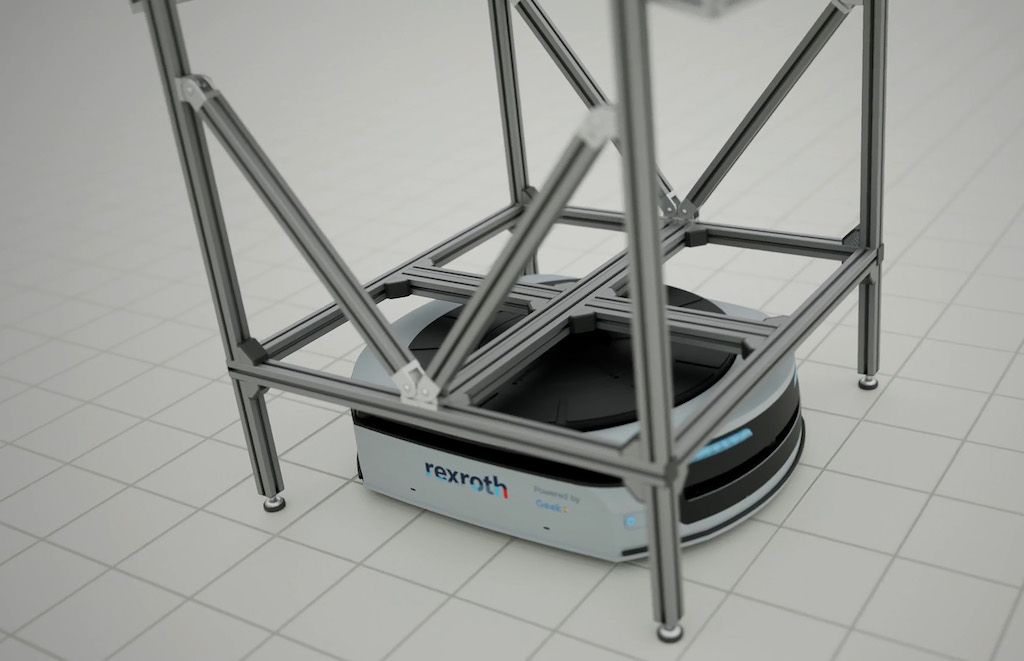
3. Packaging line
Robotics play an increasingly important role in packaging environments. As systems become sophisticated enough to handle a wider range of tasks, they can provide the flexibility operations need to address labor force shortages. Technologies like AMRs have a big role to play in improving efficiency and safety in warehouse automation. They can improve flexibility in systemwide processes when they’re all connected to one control system that can use data from the production floor to respond to disruptions or optimize flows.
Robots differ in functionality. Packaging lines that require maximum flexibility need AMRs that can handle a variety of payloads and can operate in a variety of spaces and changing production floors. Some AMRs can that meet these requirements, with capacity to handle payloads up to 1,000 kg and 360-deg obstacle detection. Some AMRs can interface with other equipment like conveyor systems or collaborative robots (cobots).
4. Assembly line
Using new intralogistics technology, mobile robots can help save time in delivering parts to manual workstations and production cells. AMRs are faster and easier to implement than more static delivery systems and don’t require delivery personnel with powered industrial trucks to move material to production lines.
AMRs can be used to move pallets or shelves so fully filled flow racks can be delivered to manual workstations. Tasks can be manually triggered via a wireless button, tablet or automatically through a programmable logic controller (PLC) or a connection to an upstream enterprise resource planning (ERP) system, manufacturing execution system (MES) or warehouse management system (WMS) via an applied program interface (API).
Automatic map updates and lidar-based navigation technology enables mobile robots to be more adaptable in rapidly changing environments without the need for special tracks or other fixed navigation aids.
Finding the right application for an AMR isn’t as simple as pulling a task out of a hat. Numerous environmental, cultural and technical factors go into setting up a fleet that yields a strong return-on-investment and fits a company’s application. Don’t move into the next phase of factory automation with AMRs alone. Partner with a vendor who will provide support, technical expertise and industry knowledge to help ensure a successful AMR implementation.
Chris Mercurio is product manager, AMR/Robotics, Bosch Rexroth. Edited by Chris Vavra, web content manager, Control Engineering, CFE Media and Technology, [email protected].
MORE ANSWERS
Keywords: autonomous mobile robot, AMR, robotics
ONLINE
See additional robotics stories at https://www.controleng.com/mechatronics-motion-control/robotics/
CONSIDER THIS
What role do AMRs play at your facility, and how are they evolving?
